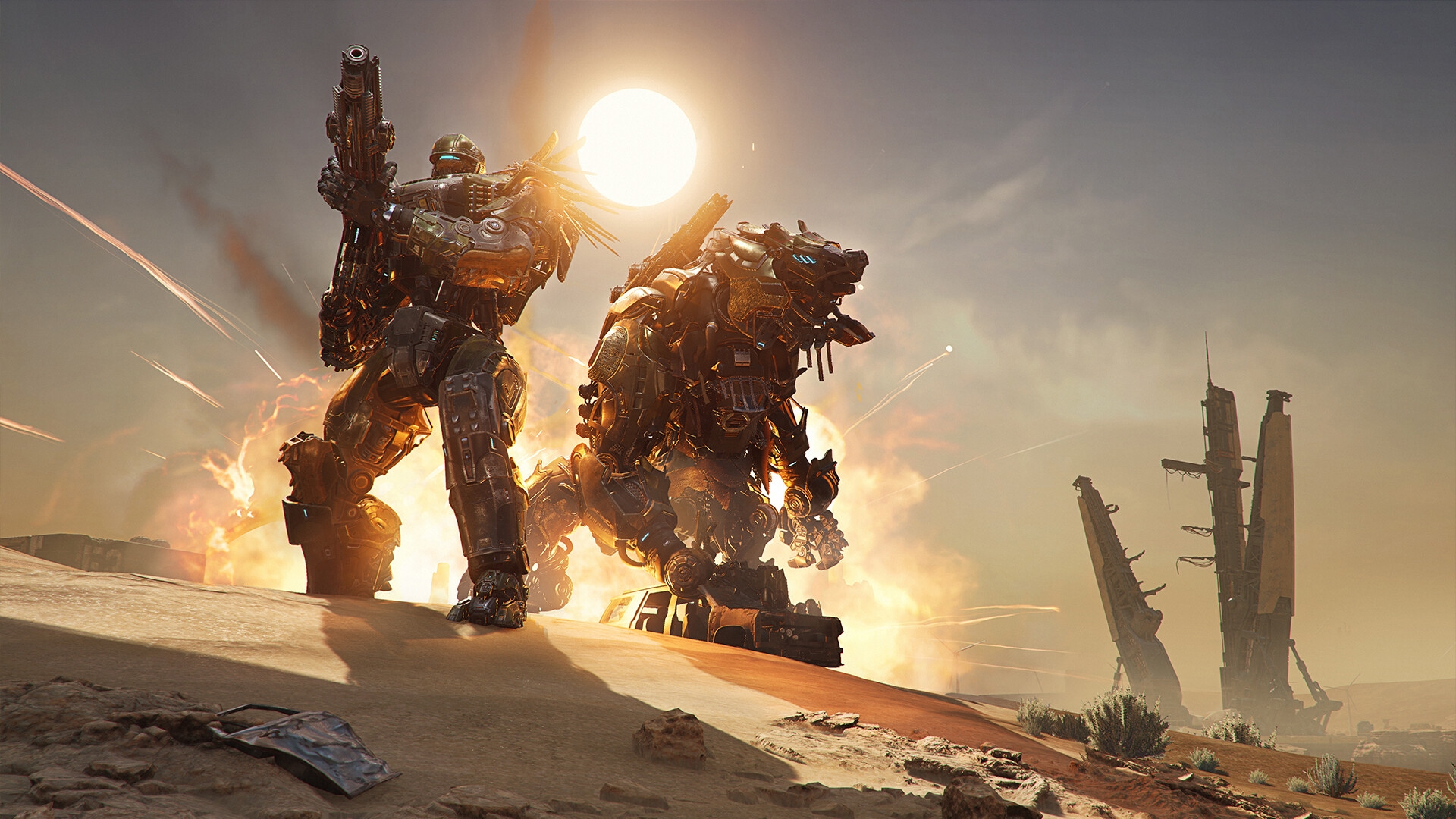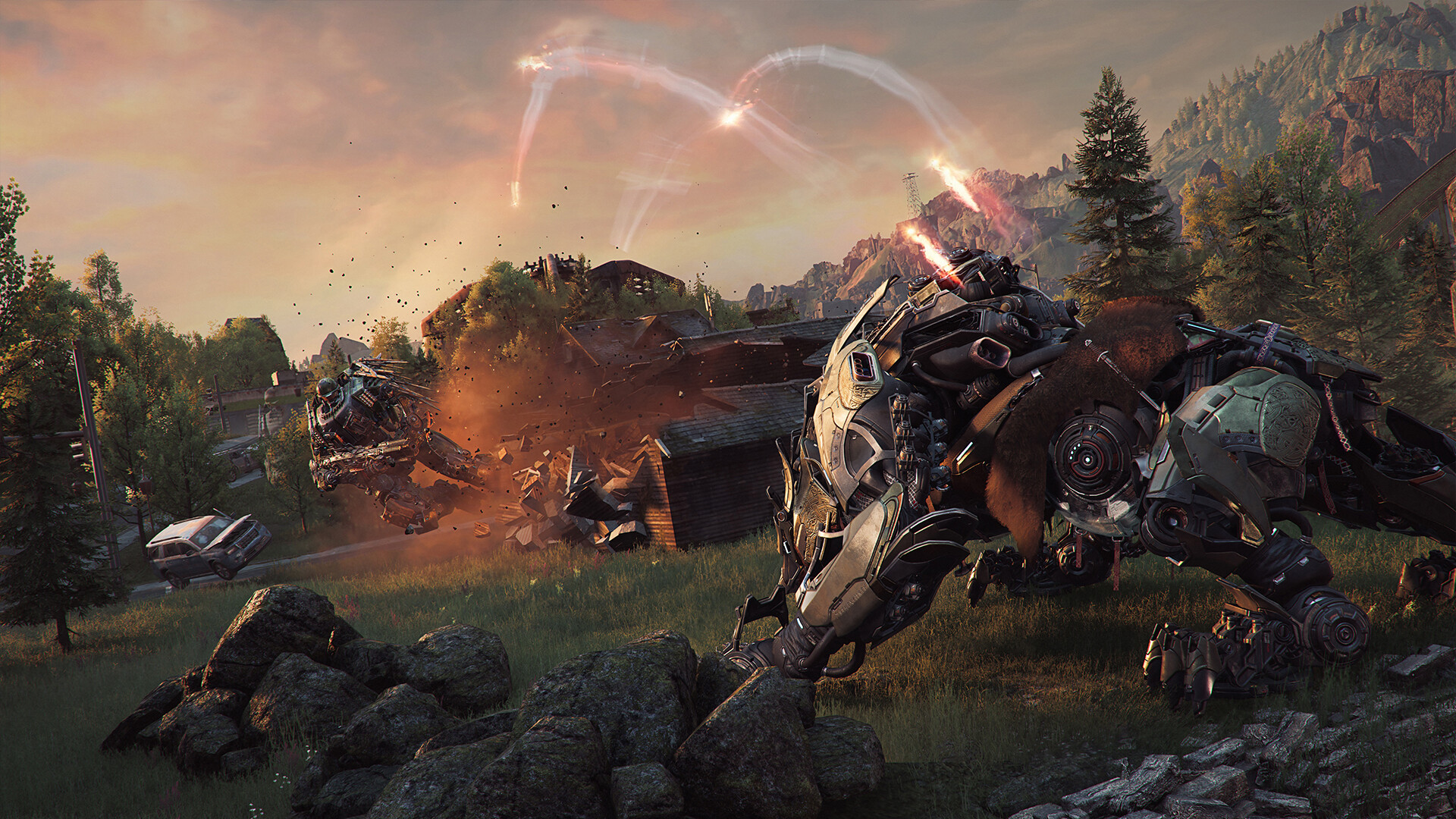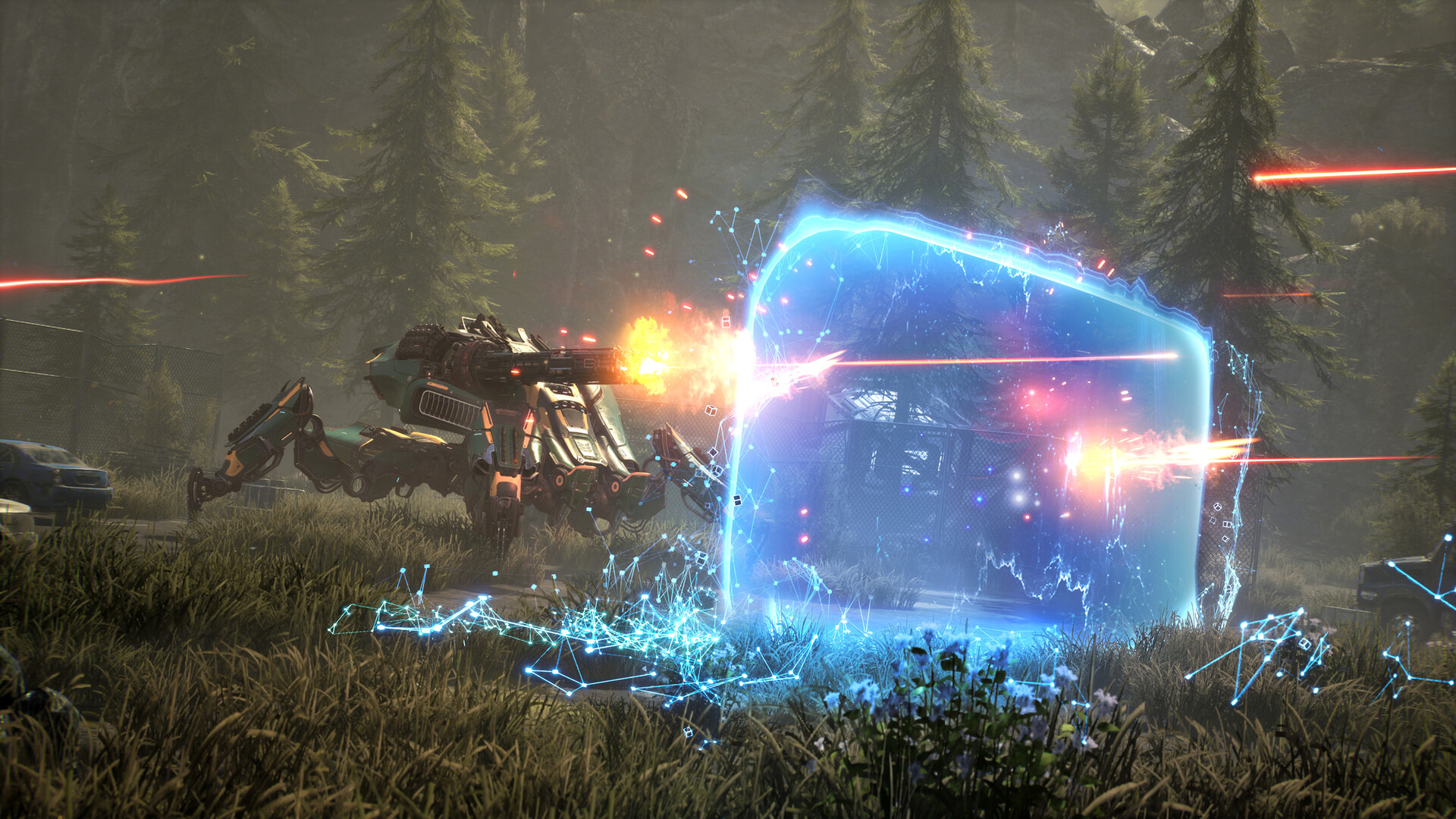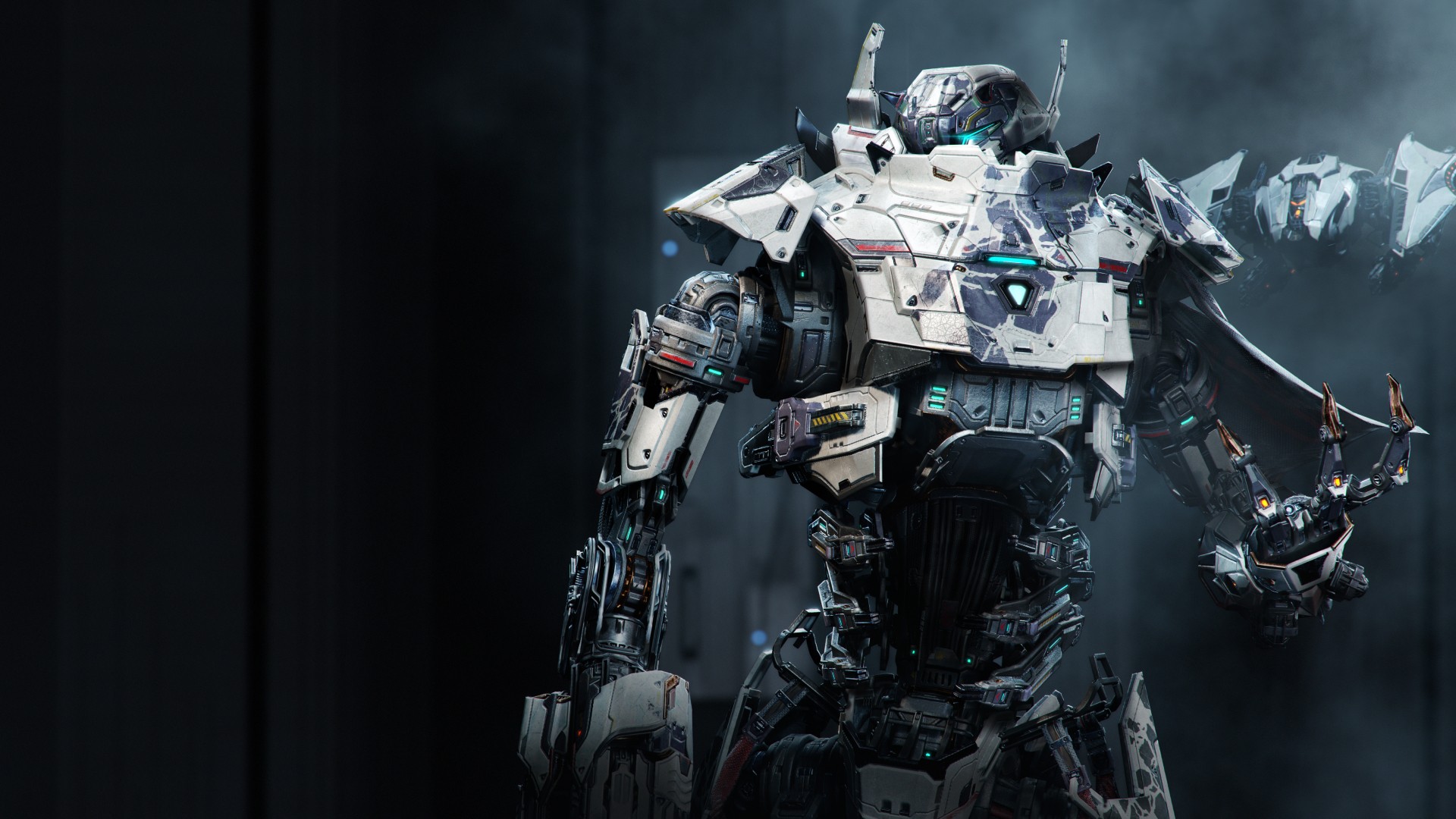Steel Hunters Early Access Review – Middle of the Food Chain
When you think of WarGaming, games like World of Tanks, World of Warships, and whatnot come to mind. So, what exactly inspired the studio to create Steel Hunters? Was it a desire to deliver competitive multiplayer with realistic mechs? Massive combat scenarios on varying scales where two armies could fight it out, completing various objectives a la Battlefield? Maybe it wanted to go the MechWarrior route and offer a competitive shooter with extensive customization,
Once you learn what Steel Hunters actually is – a PvEvP extraction third-person shooter where the mechs are akin to heroes – the excitement dulls. The gameplay flow is understandable and easy to get into, but this melting point of genres is equivalent to visiting the Four Corners Monument. You’re not getting the best experience each could offer, and the intersection itself isn’t all that fancy.
“The overall number of players doesn’t offer much room for chaos, and though the risk of being third-partied is almost non-existent, there must be a happier medium than this.”
The “premise” is that a catastrophic event has altered the Earth and caused the emergence of Starfall. This resource is valuable for some reason, and various factions emerge to gather it, using giant mechs called Hunters. Granted, it’s likely little more than a reason to explain away the variance in Hunter design, like why one faction has mostly bog-standard human-like mechs with workhorse kits or why another consists entirely of quadrupedal beast machines that would give the Maximals a run for their money. I’m okay with this, but if you’re expecting something deeper or really any semblance of lore, you’ll have to wait.
That being said, I have some gripes on how the premise factors into the overall flow of matches. After completing Basic Training, two modes open up – Last Stand and Skirmish. The former sees 12 players battling with various AI combatants on the map, while the latter only features PvE threats, likely to help familiarize players with different objectives. It certainly can’t be to learn more about dealing with the AI foes because there’s currently only one type – drones – and their only other attack is calling down a missile strike.
Thus, the 12-player Last Stand is where you’ll spend most of your time. Once you land, the impetus is on taking out drones, gathering Energy to level up your Hunter to improve its stats and unlock other abilities, and finding Modules to improve your damage, shields and base health. Higher-rarity modules equal higher increases.
Unfortunately, Last Stand only facilitates two-player squads with 12 players in total, which results in some battles feeling pretty tame. The overall number of players doesn’t offer much room for chaos, and though the risk of being third-partied is almost non-existent, there must be a happier medium than this.
“It’s not an extraction shooter where you gather loot, exit the map, and curate a loadout before jumping back in.”
Even then, matches quickly whittle down to three surviving squads. If half of those are bots – and based on their aim and overall damage output, they may well be – then it feels more like 2v2v2. This means a lot of downtime and a lot of shooting relatively harmless drones.
Since Modules only offer straight increases to your stats (and no random perks or anything worthwhile), it’s better to ignore the small fry and Uncommon Supply Pods from level 2 onwards and focus on the Guard Drones, Rogue Drones or Legendary Scouts to get more XP and potentially higher rarities. There are special consumables which provide benefits like reducing the cooldown on abilities and transforming you into a giant Colossus mech, but the latter felt so rare in matches that it wasn’t worth pursuing.
Because the match flow is so quick, it’s not long before you’re level-capped with enough high-rarity modules. There’s nothing left to do afterwards but rush to the extraction zone, capture it and wait for the timer to tick down while the sole surviving team (or two) attempts to stop you. While it’s initially exciting to roll up on a duo and try to take them out, especially when drones are in the mix, these duels quickly become one-note.
This raises another problem with the overall structure of Steel Hunters. It’s not an extraction shooter where you gather loot, exit the map, and curate a loadout before jumping back in. There aren’t zones with higher threat levels or tougher enemies that could incentivize this, nor are there alternative means to extract. Extraction is simply a means to force PvP against the last remaining squad. Whether you come in first or second doesn’t really matter either.
“It’s also worth mentioning that the entire roster isn’t available to unlock from the start – completing the introductory missions provides Constructs (yes, another currency) for unlocking two additional Hunters.”
What about Starfall, the reason that all these factions are fighting? You’re awarded Starfall Shards at the end of a match, which can be converted into Starfall with Platinum. You can then spend this to upgrade your Hunter’s level and unlock Points, which can be used to unlock certain passives in their Skill Tree. Certain upgrades require Credits, also earned from matches and the prominent Battle Pass.
Why this confusing system? Well, Platinum is also used to upgrade the free Battle Pass into Pro and Premium tiers. There aren’t any microtransactions, but if Platinum becomes the default premium currency, then I’m not sure how I feel about using it to essentially boost your Hunter’s level, especially since you unlock access to stat increases and ability upgrades at higher levels. Last Stand matches according to a range of Hunter levels, which should level the starting field somewhat.
However, you still get Skill Points from leveling a Hunter, which can go into upgrades in the current tier. Because of the matchmaking range, the chances of a truly level start that’s dependent on your map knowledge and skill is very low, if non-existent. And besides, fighting over Starfall, when everyone – which may as well be two other teams – obtains Shards regardless of the outcomes, causes the whole premise to fall apart.
It’s also worth mentioning that the entire roster isn’t available to unlock from the start – completing the introductory missions provides Constructs (yes, another currency) for unlocking two additional Hunters. You can earn more Constructs by leveling your account, which is all well and good right now, but I’m still skeptical about potentially monetizing this as well.
I’ve gone on about the progression and overall match flow, but what about the Hunters themselves? Though they’re slower than, say, the mechs in Titanfall or even Mecha Break, I kind of like the overall weight of their movements.
“Nevertheless, I’m still perplexed about WarGaming’s long-term goal with Steel Hunters. Maybe it felt that a typical hero shooter wouldn’t have much room to survive in the current market (which is understandable).”
Tying jump and dash to the same charges felt annoying at first, but You’re not jumping in the middle of combat because the latter are too valuable for avoiding damage, so it’s mostly for traversal. In that case, why do all the Hunters have such measly, pathetic jumps that rarely surmount much of the terrain?
Ability-wise, there’s nothing that you haven’t seen before, but credit where it’s due for making each Hunter feel different, even among the same faction. The Ursus plays like an up-close brawler with its short-range cannon and armor, while the Fenris uses more hit-and-run tactics, potentially closing the gap to melee a weak enemy. The mod selection for altering their abilities is pretty limited right now, but at least they ensure a bit more variety for your play style. I didn’t feel all that much synergy between different heroes (like in your average hero shooter), but given the flow, it’s unsurprising.
Steel Hunters doesn’t offer much content currently. However, it is free-to-play, so nothing is stopping you from giving it a whirl. The overall aesthetic of the mechs gives Transformers vibes (more Michael Bay than Hasbro), but it works, and the quips from each Hunter provide a bit more personality without feeling overdone. Sound design is also on point, reinforcing the heft and weight of these machines.
Nevertheless, I’m still perplexed about WarGaming’s long-term goal with Steel Hunters. Maybe it felt that a typical hero shooter wouldn’t have much room to survive in the current market (which is understandable). However, it could do much more with the premise, mechanics, and Hunters than simply a superlite extraction shooter with dollops of confounding progression. The current plan is to remain in early access for four to six months while adding new modes, Hunters, progression paths and maps. Hopefully, it lives up to its potential and ups the chaos beyond this surface-level hodgepodge of genres.
This game was reviewed on PC.






Comments are closed.